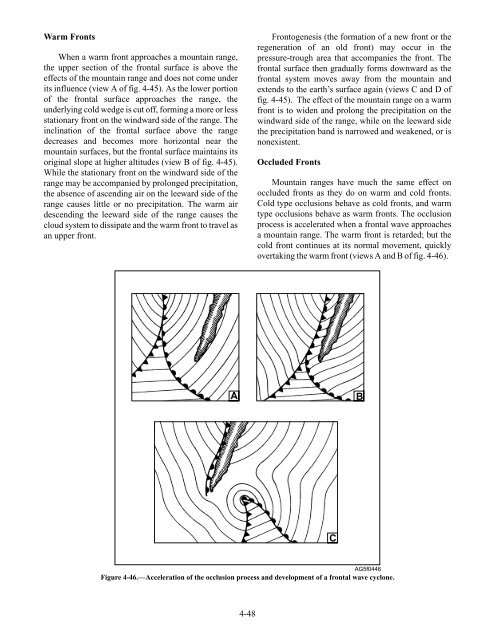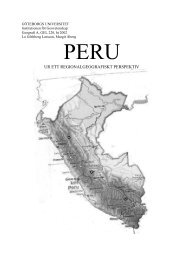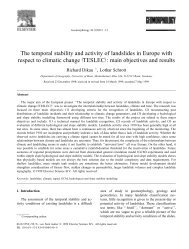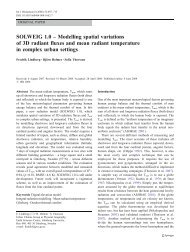AIR MASSES AND FRONTS
AIR MASSES AND FRONTS
AIR MASSES AND FRONTS
You also want an ePaper? Increase the reach of your titles
YUMPU automatically turns print PDFs into web optimized ePapers that Google loves.
Warm Fronts<br />
When a warm front approaches a mountain range,<br />
the upper section of the frontal surface is above the<br />
effects of the mountain range and does not come under<br />
its influence (view A of fig. 4-45). As the lower portion<br />
of the frontal surface approaches the range, the<br />
underlying cold wedge is cut off, forming a more or less<br />
stationary front on the windward side of the range. The<br />
inclination of the frontal surface above the range<br />
decreases and becomes more horizontal near the<br />
mountain surfaces, but the frontal surface maintains its<br />
original slope at higher altitudes (view B of fig. 4-45).<br />
While the stationary front on the windward side of the<br />
range may be accompanied by prolonged precipitation,<br />
the absence of ascending air on the leeward side of the<br />
range causes little or no precipitation. The warm air<br />
descending the leeward side of the range causes the<br />
cloud system to dissipate and the warm front to travel as<br />
an upper front.<br />
4-48<br />
Frontogenesis (the formation of a new front or the<br />
regeneration of an old front) may occur in the<br />
pressure-trough area that accompanies the front. The<br />
frontal surface then gradually forms downward as the<br />
frontal system moves away from the mountain and<br />
extends to the earth’s surface again (views C and D of<br />
fig. 4-45). The effect of the mountain range on a warm<br />
front is to widen and prolong the precipitation on the<br />
windward side of the range, while on the leeward side<br />
the precipitation band is narrowed and weakened, or is<br />
nonexistent.<br />
Occluded Fronts<br />
Mountain ranges have much the same effect on<br />
occluded fronts as they do on warm and cold fronts.<br />
Cold type occlusions behave as cold fronts, and warm<br />
type occlusions behave as warm fronts. The occlusion<br />
process is accelerated when a frontal wave approaches<br />
a mountain range. The warm front is retarded; but the<br />
cold front continues at its normal movement, quickly<br />
overtaking the warm front (views A and B of fig. 4-46).<br />
A B<br />
AG5f0446<br />
Figure 4-46.—Acceleration of the occlusion process and development of a frontal wave cyclone.<br />
C









